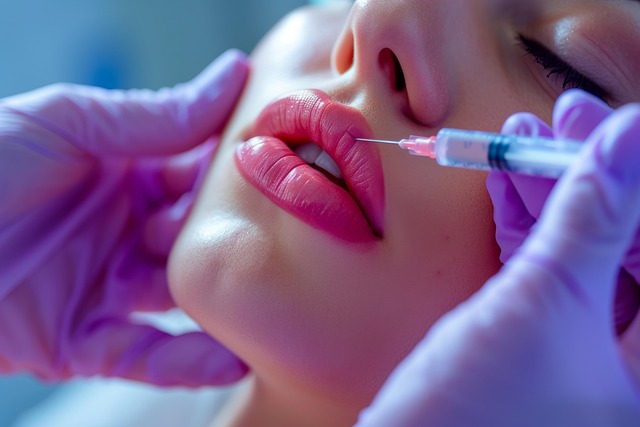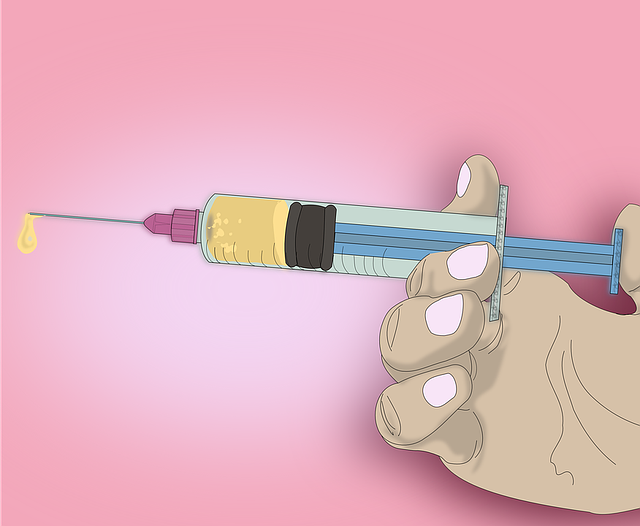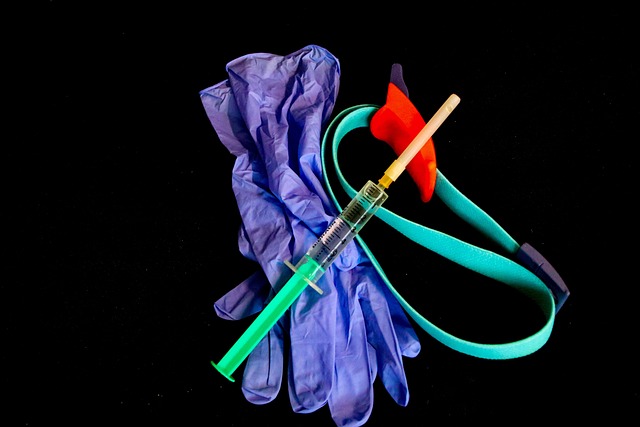Botox injections are a popular, non-surgical solution for crow's feet, temporarily paralyzing eye muscles to reduce fine lines around the eyes and mouth. With minimal downtime, quick recovery, and natural results, treatments offer a youthful appearance with lasting benefits (3-6 months). Early intervention can help maintain a young look and potentially delay more extensive procedures. However, potential side effects include temporary redness, swelling, headaches, and blurred vision, so consulting a qualified healthcare provider is crucial before treatment. Choosing the right specialist and following post-treatment care instructions are vital for safety and optimal results.
“Looking to bid farewell to those pesky crow’s feet? This comprehensive guide explores the power of Botox injections as a game-changer in reducing fine lines and wrinkles around the eyes. We delve into the science behind crow’s feet, understanding their causes and anatomy. Discover how Botox treatments work miraculously to relax facial muscles, smoothen skin, and provide long-lasting results. From benefits and potential risks to the procedure’s intricacies and expert selection, this article is your one-stop resource for everything related to Botox injections.”
Understanding Crow's Feet: Causes and Anatomy

Crow’s feet, characterized by fine lines and wrinkles at the corners of the eyes, are a common sign of aging. Understanding their formation involves delving into the anatomy of the face. The skin around the eyes is thinner and contains fewer oil glands compared to other areas, making it more susceptible to wrinkling. Over time, sun exposure, squinting, and facial expressions contribute to the breakdown of collagen and elastin fibers, leading to the formation of crow’s feet.
Botox injections have emerged as a popular non-surgical solution for managing these fine lines. By relaxing the muscles that cause repeated furrowing, Botox can significantly reduce the appearance of crow’s feet. This minimally invasive procedure involves injecting a small amount of botulinum toxin into the target muscle areas, offering a temporary yet effective aesthetic enhancement.
The Role of Botox in Treating Crow's Feet

Botox injections have emerged as a popular and effective non-surgical treatment for crow’s feet—the fine lines and wrinkles that often appear around the eyes and mouth due to repeated facial expressions, aging, or both. The procedure involves injecting a small amount of Botox into specific muscle groups responsible for causing these lines. By temporarily paralyzing these muscles, Botox smoothens the skin, reducing the appearance of crow’s feet.
This treatment offers several advantages, including quick recovery time with minimal downtime, no invasive procedures, and long-lasting results. Many patients appreciate the natural look it provides, as the effects are subtle yet effective. With regular treatments, individuals can achieve youthful-looking skin, enhancing their overall appearance and boosting confidence.
How Botox Injections Work for Crow's Feet

Botox injections have become a popular and effective treatment for crow’s feet, those fine lines that often appear at the outer corners of the eyes. The procedure involves injecting a small amount of Botox into specific muscles around the eye area, which helps to relax and smoothen the skin. By blocking nerve signals to these muscles, Botox prevents them from contracting, reducing the appearance of wrinkles and fine lines over time.
This non-invasive treatment offers a temporary yet noticeable result, as the effects typically last between 3 to 6 months. The process is relatively quick, usually taking just 15 to 30 minutes, and there is minimal downtime afterward. Many people appreciate the convenience and effectiveness of Botox injections for crow’s feet, making it a preferred choice in skincare routines for those seeking a youthful appearance.
Benefits of Using Botox for Crow's Feet Reduction

Botox injections have emerged as a popular and effective solution for reducing the appearance of crow’s feet, those fine lines that often appear around the eyes due to aging or sun exposure. One of the key benefits is its ability to smooth out wrinkles temporarily, providing a more youthful and relaxed look. This non-invasive procedure offers a significant advantage over surgical options, as it requires no downtime and has minimal recovery, making it an appealing choice for those seeking a quick and discreet enhancement.
Additionally, Botox injections can help prevent the formation of new wrinkles by relaxing facial muscles that cause creasing. By addressing crow’s feet early, individuals can maintain a more youthful appearance and potentially delay the need for more extensive procedures in the future. This aesthetic treatment has gained popularity due to its safety profile, quick results, and ability to deliver natural-looking outcomes.
Potential Side Effects and Risks to Consider

While Botox injections are a popular and effective treatment for crow’s feet, it’s crucial to be aware of potential side effects and risks before proceeding. Like any medical procedure, Botox isn’t without its drawbacks. Some individuals may experience temporary redness, swelling, or discomfort at the injection site. Headaches, muscle weakness around the eyes, and blurred vision are also possible side effects, though rare. More seriously, there’s a risk of asymmetry in facial expression due to uneven botox distribution. Additionally, for those with certain medical conditions or taking specific medications, Botox could interact negatively, leading to unforeseen complications. Therefore, it’s essential to consult with a qualified healthcare provider who can assess your unique situation and help you understand the full range of potential outcomes.
The Procedure: What to Expect During and After Botox Treatment

Botox injections for crow’s feet have become a popular non-surgical aesthetic treatment. During the procedure, a trained professional will inject small amounts of Botox into the specific muscle groups responsible for the dynamic wrinkles at the corners of your eyes. This process typically takes around 15-30 minutes, depending on the area being treated and the individual’s needs. You may experience slight discomfort or bruising afterwards, but these side effects are usually temporary.
After the treatment, it’s important to follow post-care instructions provided by your healthcare provider. This may include avoiding strenuous activities, protecting the treated areas from excessive sun exposure, and steering clear of certain medications that can increase bleeding risk. Within a few days, you should start to notice a reduction in the appearance of crow’s feet, as the Botox relaxes the muscles, preventing them from pulling on the skin and causing wrinkles. Results typically last between 3-6 months, after which a touch-up treatment may be recommended.
Choosing the Right Dermatologist or Injector for Safe Botox Administration

When considering Botox injections for crow’s feet, selecting the right dermatologist or injector is paramount to ensure safety and achieve desired results. It’s crucial to look beyond certifications and experience, focusing on their specialized training in facial aesthetics. Ask about their approach to patient consultation, understanding your concerns and goals is key to a successful treatment plan.
Reputation and reviews are valuable indicators of a provider’s skill and care. Check online platforms for feedback from previous patients, paying attention to their experiences with Botox injections for similar concerns. A reputable practitioner will prioritize your safety, offer personalized advice, and provide before-and-after examples to give you a realistic expectation of results.
Maintenance and Follow-up Care for Optimal Results

After your initial round of Botox injections for crow’s feet, maintaining optimal results requires ongoing care. It’s crucial to understand that while Botox offers a significant improvement in fine lines and wrinkles, its effects are not permanent. Regular follow-up treatments are essential to keep up the desired results.
During follow-up appointments, your healthcare provider will assess the treatment area and make recommendations for additional injections if necessary. Proper post-treatment care, including staying hydrated and avoiding strenuous activities for a few days, can also contribute to longer-lasting results. Remember, consistent maintenance ensures that crow’s feet remain minimised, allowing you to enjoy the rejuvenated appearance for more extended periods.
